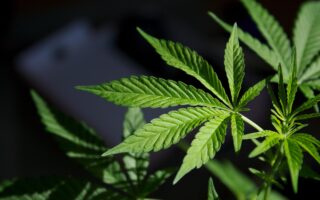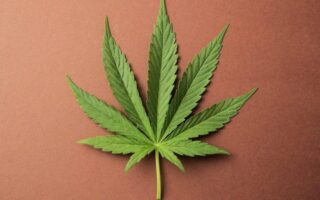Introduction: Is Cannabis Weed?
In the verdant tapestry of nature, few plants have sparked as much curiosity and controversy as cannabis. Often colloquially referred to as “weed,” this versatile botanical has woven its way through human history, culture, and medicine. With its growing acceptance and legal status in various regions, many are left pondering the nuanced question: is cannabis simply weed? This inquiry invites us to explore the diverse facets of this plant—its biological makeup, societal perceptions, and the dichotomy between recreational and medicinal use. As we delve into this topic, we aim to unravel the layers of meaning and understanding surrounding cannabis, shedding light on its true identity in a world that continues to evolve its relationship with this remarkable herb.
Table of Contents
- Understanding the Terminology Behind Cannabis and Weed
- Exploring the Varieties: What Sets Cannabis Apart
- Legal Landscape: Navigating Cannabis Regulations in Your Area
- Tips for Responsible Use: Ensuring Safety and Enjoyment
- Q&A
- Key Takeaways
Understanding the Terminology Behind Cannabis and Weed
When delving into the world of cannabis, it’s essential to decode its intricate terminology, as many terms are often used interchangeably. At its core, cannabis refers to the plant genus that encompasses various species, chiefly Cannabis sativa, Cannabis indica, and Cannabis ruderalis. Meanwhile, weed is a colloquial term commonly used to describe cannabis in its natural form, particularly when discussing its recreational or medicinal use. This casual nomenclature often leads to confusion, especially for newcomers who might not be familiar with the broader classifications of cannabis products.
To further clarify, here are some essential terms related to cannabis that will enhance your understanding:
- Marijuana: Typically refers to the dried flowers and leaves of the cannabis plant, high in tetrahydrocannabinol (THC), the psychoactive compound.
- Hemp: A variety of the cannabis plant cultivated for industrial purposes with low THC levels.
- CBD: Cannabidiol, a non-psychoactive compound found in cannabis known for its therapeutic properties.
- THC: The primary psychoactive component responsible for the intoxicating effects associated with marijuana.
Additionally, the cannabis market has led to the emergence of various products, including oils, edibles, and concentrates, each with unique attributes and effects. Here’s a brief comparison of some popular cannabis product types:
| Product Type | Description | Strength |
|---|---|---|
| Flower | Dried buds of the cannabis plant, smoked or vaporized. | Varies by strain |
| Edibles | Food products infused with cannabis extracts. | Low to High |
| Concentrates | Highly potent extracts of THC or CBD. | High |
Exploring the Varieties: What Sets Cannabis Apart
Cannabis, often referred to as weed, encompasses a diverse array of strains, each boasting unique characteristics and effects. The two primary species, Cannabis sativa and Cannabis indica, are known for their distinct profiles. Sativa strains are typically associated with uplifting and energizing effects, making them ideal for daytime use, while indica strains tend to be more relaxing and sedative, perfect for evening consumption. However, hybrid strains, resulting from crossbreeding these two, offer a spectrum of experiences that cater to various preferences and desired effects.
What truly sets cannabis apart lies in its rich array of terpenes and cannabinoids, which influence both flavor and therapeutic benefits. Here are some notable differences:
| Component | Description |
|---|---|
| THC | The primary psychoactive compound, responsible for the “high.” |
| CBD | A non-psychoactive compound that offers therapeutic benefits without the high. |
| Terpenes | Organic compounds that give cannabis its distinct aroma and flavor, also contributing to its effects. |
Understanding these intricacies not only enhances appreciation but also helps users make informed choices based on their desired experiences. With ongoing research, the world of cannabis continues to evolve, revealing even more varieties and benefits for enthusiasts and newcomers alike.
Legal Landscape: Navigating Cannabis Regulations in Your Area
Understanding the complexities of cannabis regulations in your area is essential for both casual users and businesses alike. As the legal landscape continues to evolve, it’s crucial to tap into the specific laws that govern the possession, use, and sale of cannabis. Different states, and even local municipalities, can have varying rules that dictate everything from permitted quantities to age restrictions. For instance:
- Regulations vary significantly: States may allow recreational or medicinal use, or both, while some maintain a complete prohibition.
- Age restrictions: These can range from 18 to 21 years, depending on local laws.
- Possession limits: Knowing how much cannabis you can legally possess is vital to avoid penalties.
- Licensing for businesses: If you’re looking to open a dispensary or related business, understanding license types and application processes is essential.
To effectively navigate the shifting sands of cannabis regulation, staying informed about local laws is imperative. Regulatory agencies often release updates, and public forums can serve as platforms for community engagement and education. Moreover, many states have established official websites that provide current information about legislation and policies. Here’s a simple overview of some common regulations across various states:
| State | Legal Status | Age Limit |
|---|---|---|
| California | Recreational & Medical | 21+ |
| Texas | Medical Only | 18+ |
| New York | Recreational & Medical | 21+ |
| Florida | Medical Only | 18+ |
Tips for Responsible Use: Ensuring Safety and Enjoyment
When diving into the world of cannabis, it’s crucial to approach it with mindfulness and care to ensure a safe and enjoyable experience. Start by understanding the different strains and their effects, as each strain can offer a unique experience. Familiarizing yourself with various consumption methods, such as smoking, vaping, or edibles, can help tailor your choice to your lifestyle. Additionally, always opt for products that have undergone proper lab testing to ensure they are free from harmful pesticides and contaminants. Maintain an open line of communication with your source to understand the product you’re using.
Setting boundaries is equally important. Here are a few tips to keep in mind:
- Know the legalities: Always stay informed about the cannabis laws in your area to ensure you remain compliant.
- Practice moderation: Start with a small dose, especially if you are a beginner, and slowly adjust based on your tolerance.
- Stay hydrated: Drink plenty of water to avoid dehydration, which can sometimes occur with cannabis use.
- Choose the right environment: Use cannabis in a safe, comfortable space where you feel relaxed.
It’s also helpful to have a trusted friend accompany you, especially when trying out new products or strains. Keeping a positive attitude and being mindful can transform your experience into a delightful journey of exploration.
Q&A
Is Cannabis Weed? A Q&A Exploration
Q1: What exactly is cannabis?
A: Cannabis is a versatile plant known for its unique chemical compounds, particularly cannabinoids like THC and CBD. It has been cultivated for thousands of years for various purposes, including medicinal, recreational, and industrial uses. The term “cannabis” encompasses various species and strains that produce different effects and benefits.
Q2: So, is cannabis the same as weed?
A: Yes, the term “weed” is often used colloquially to refer to cannabis, especially when discussing its recreational use. However, “weeds” generally imply an undesirable plant that is difficult to control— hence, the informal nickname. While not all cannabis is considered weed in a pejorative sense, in casual conversations, these terms can frequently intermingle.
Q3: Are there different types of cannabis?
A: Absolutely! The primary types of cannabis are Cannabis sativa, Cannabis indica, and Cannabis ruderalis. Each type has distinct growth characteristics and effects. Sativa strains are often associated with uplifting effects, while indica strains are known for their relaxing qualities. Ruderalis is less commonly used recreationally but is prized for its ability to grow in harsher environments and for its auto-flowering trait.
Q4: What are some of the common uses of cannabis?
A: Cannabis serves a plethora of purposes. Recreationally, it is used for its psychoactive effects, often bringing about a state of relaxation or euphoria. Medically, it is employed to alleviate symptoms like pain, anxiety, and nausea. Additionally, hemp, a variety of cannabis with low THC, is used industrially for textiles, food, and biofuels.
Q5: Is cannabis legal everywhere?
A: Not by a long shot! The legality of cannabis varies significantly by country and even within regions of the same country. While some places have embraced legalization for both medicinal and recreational use, others maintain strict prohibitions. Always check your local regulations if you’re curious about cannabis in your area!
Q6: What misconceptions exist about cannabis and weed?
A: Common misconceptions include the belief that all cannabis is highly intoxicating or that it has no medicinal value. In reality, there are low-THC strains that provide therapeutic benefits without the high. Another myth is that it’s easy to quit using cannabis once you’re hooked, which varies greatly among individuals. The effects and user experiences are as diverse as the strains themselves.
Q7: How does cannabis interact with our bodies?
A: Cannabis interacts with the body’s endocannabinoid system, a complex network of receptors and neurotransmitters that help regulate various physiological processes. This interaction can influence mood, appetite, pain sensation, and memory among other functions. The unique interaction largely depends on the strain, the method of consumption, and the individual user’s body chemistry.
Q8: Can cannabis be harmful?
A: Like many substances, cannabis can have adverse effects, particularly with heavy or irresponsible use. Some users may experience anxiety, paranoia, or impaired cognitive function. Moreover, long-term use, especially in adolescents, may affect brain development and lead to dependence. It’s essential to approach cannabis with knowledge and moderation.
Q9: Where can people learn more about cannabis?
A: There are numerous resources available, from reputable health websites and scientific journals to books and local workshops. Engaging with communities—both online and offline—can also provide valuable insights. Just remember, it’s crucial to discern credible information from myths and hearsay!
By exploring the nuances of cannabis and its relation to the term “weed,” we aim to foster a deeper understanding of this complex and often misunderstood plant.
Key Takeaways
In closing, the exploration of whether cannabis is indeed synonymous with weed invites us to delve deeper into the multifaceted world of this remarkable plant. From its ancient roots as a medicinal herb to its contemporary status as a cultural phenomenon, the terminology surrounding cannabis can often blur the lines of clarity. As awareness grows and conversations evolve, it becomes essential to distinguish between the various forms and uses of cannabis, recognizing that what may be commonly referred to as “weed” carries with it an array of meanings and implications.
As we continue to navigate the ever-changing landscape of cannabis legislation and perception, understanding the nuances of this plant empowers us to engage thoughtfully in discussions surrounding its use. Whether for therapeutic applications, recreational enjoyment, or simply a matter of semantics, cannabis remains a topic of fascination and ongoing discovery. Ultimately, the answer to “is cannabis weed?” may lie not just in the definitions themselves but in our insights, experiences, and expectations of this ancient yet ever-relevant herb. Thank you for joining us on this journey of understanding.



